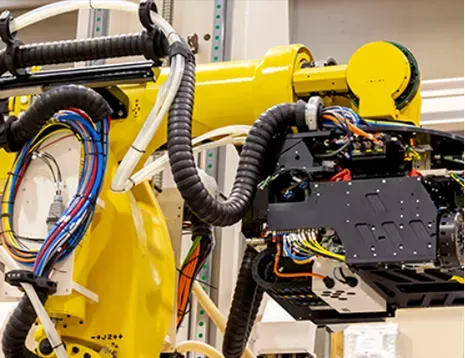drag chain conveyor
Understanding Drag Chain Conveyors The Efficient Solution for Material Handling
In various industrial settings, efficient material handling is crucial for maximizing productivity and ensuring smooth operations. One effective solution for transporting bulk materials is the drag chain conveyor. This type of conveyor system is renowned for its durability, reliability, and versatility, making it a preferred choice across diverse industries, including manufacturing, agriculture, and mining.
What is a Drag Chain Conveyor?
A drag chain conveyor is a mechanical system designed to move bulk materials horizontally or at slight inclines. It consists of a series of linked chains that are powered by a motor and drive system. The chains are equipped with slats or flights that carry the material along the conveyor trough. Typically, these conveyors are used for handling bulk materials such as coal, grains, aggregates, and other similar products, offering a robust solution for both horizontal and vertical transportation.
How Does it Work?
The operation of a drag chain conveyor is relatively straightforward. The motor powers the drive assembly, which rotates the chains, moving them along a predefined track. Materials are loaded onto the conveyor and are securely transported as the chains slide over wear strips or rails. The enclosed structure of the conveyor system helps prevent spillage and contamination, making it an ideal choice for materials that need to be kept clean or dry.
Key Benefits of Drag Chain Conveyors
1. Versatility Drag chain conveyors are highly versatile and adaptable to various applications. They can transport a wide range of materials, from free-flowing powders to heavy, dense materials, making them suitable for different industrial processes.
drag chain conveyor

2. Space Efficiency Due to their compact design, drag chain conveyors can be installed in limited space. They can navigate tight corners and changes in elevation, optimizing layout in manufacturing and processing facilities.
3. Durability Constructed from high-quality materials, drag chain conveyors are built to withstand harsh operating conditions, such as extreme temperatures, moisture, and abrasive materials. This durability ensures a long service life, reducing maintenance and replacement costs.
4. Low Maintenance Requirements The design of drag chain conveyors minimizes wear and tear, resulting in lower maintenance needs compared to other conveyor types. Regular inspections and minor adjustments can keep operations running smoothly with minimal downtime.
5. Safety Features Many drag chain conveyors are designed with safety mechanisms to protect workers. Features such as emergency stop buttons, guards, and safety interlocks help ensure a safe working environment during material handling operations.
Applications Across Industries
Drag chain conveyors are employed in a variety of industries, underscoring their versatility. In agriculture, they are used for transporting grains and animal feed, while in manufacturing, they facilitate the movement of components and raw materials. The mining industry relies on drag chain conveyors for the efficient transport of minerals and ores. Additionally, waste management facilities use these conveyors for the movement of recycled materials.
Conclusion
In conclusion, drag chain conveyors offer a reliable and efficient solution for bulk material handling in various industrial applications. Their versatility, durability, and low maintenance requirements make them an invaluable asset in optimizing production processes. As industries continue to evolve and seek innovative solutions for material transport, drag chain conveyors remain a staple, ensuring that operations are conducted safely, efficiently, and with minimal environmental impact. By understanding the benefits and applications of drag chain conveyors, businesses can make informed decisions that enhance productivity and operational efficiency.








